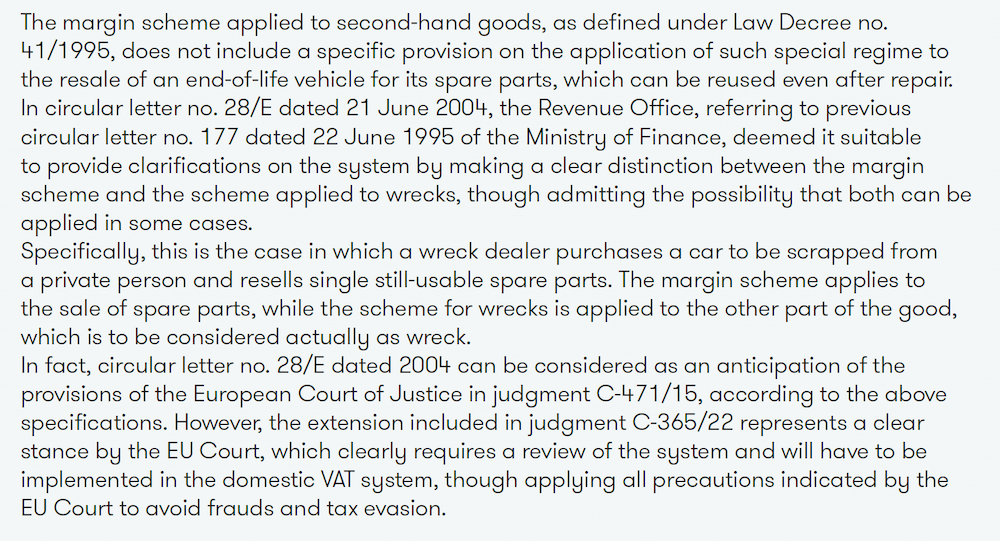-
Transactional advisory services
Find out more about the transactional advisory services of Grant Thornton Financial Advisory Services
-
Valuations
Find out more about the valuations services of Grant Thornton Financial Advisory Services
-
Mergers and acquisitions
Find out more about the merger and acquisition services of Grant Thornton Financial Advisory Services
-
Forensic and investigation services
Find out more about the forensic and investigation services of Grant Thornton Financial Advisory Services
-
Recovery & reorganisation
Find out more about the Recovery & reorganisation services of Grant Thornton Financial Advisory Services
-
Business risk services
Find out more about the business risk services of Grant Thornton Financial Advisory Services
-
Business consulting
Find out more about the business consulting services of Grant Thornton Financial Advisory Services
-
Capital market
Capital market
-
Corporate and business tax
Find out more about our corporate and business tax services.
-
Direct international tax
Find out more about our direct international tax services.
-
Global mobility services
Find out more about our global mobility services.
-
Indirect international tax
Find out more about our indirect international tax services.
-
Transfer pricing
Find out more about our transfer pricing services.
-
Litigation
Our lawyers and accountants can manage all defense measures provided not only by the Italian law, but also by EU regulations and conventions
-
Family business
Find out more about our Family business services.
-
Legal
The client can be assisted in every need and with the same care both on important operations or disputes and on simple matters

-
Back office outsourcing
Find out more about our Back office outsourcing services
-
Business process outsourcing
Find out more about our business process outsourcing services.
-
Compilation of financial statements
Find out more about our compilation of financial statements services.
-
Tax compliance
Find out more about our tax compliance services.
-
Electronic invoicing
Find out more about our electronic invoicing services
-
Electronic storage
Electronic storage is an archiving procedure that guarantees the legal validity of a digitally stored electronic document
-
Revaluation of corporate assets
Find out your civil and fiscal revaluation of tangible, intangible and financial assets
-
Human resources consulting
Find out more about our human resources consulting services.
-
Payroll
Find out more about our payroll services.
-
HR News
HR News the monthly information newsletter by Grant Thornton HR
-
Cybersecurity
GT Digital helps clients structure information security management internal functions, also through partially or totally outsourced functions
-
Agile and Programme Management
GT Digital provides support in the adoption and implementation of different portfolio management
-
Robotic Process Automation
Our “BOT Farm” can rely on digital workers able to help clients in routine activities, allowing employees to deal with more added-value activities
-
Data strategy and management
GT Digital can support clients in seizing the opportunities offered by Big Data, from the definition of strategies to the implementation of systems
-
Enterprise Resource Planning
We support clients in selecting the most appropriate ERP System according to their specific needs, helping them also understand licensing models
-
IT strategy
GT Digital supports clients in making strategic choices, identifying innovation opportunities, comparing themselves with competitors
-
IT service management
We can support with software selection and with the implementation of dedicated tools for the management of ICT processes
-
DORA and NIS 2
The entry into force of the DORA Regulation and NIS2 represents a major step towards the creation of a harmonised regulatory framework
Judgment of the European Court of Justice no. C-365/22 dated May 17, 2023, IT case
By Mario Spera - Principal of Bernoni Grant Thornton
1. Introduction
With judgment C-365/22 dated May 17, 2023, IT case, the European Court of Justice deals with a very peculiar matter concerning the extension of the scope of application of the margin scheme for second-hand goods also to spare parts of end-of-life and non-usable cars which are sold as a whole.
In the case at issue, a Belgian taxable person registered for VAT purposes which purchased completely damaged vehicles (which could not be repaired/modified to be reused as they were) from insurance companies and resold them as “wrecks” or together with spare parts that the client could use.
Uncertainties derived from the fact that in the past, with judgment C-471/15 Sjelle Autogenbrug dated January 18, 2017, the Court of Justice ruled in favour of the application of the margin scheme also if the sale would concern spare parts sold individually after removing them from end-of-life vehicles.
In the context analysed by the Court, the matter is quite specific, since it is aimed at ensuring whether the generic sale of a second-hand transport means, which is in no way suitable for reuse, can fall within the scope of application of the margin scheme, even though the aim of the sale is to allow the client to use spare parts.
2. Sale of second-hand goods
It should be preliminarily highlighted that, according to recital no. 51 of VAT Directive (2006/112/EC), the application of a special scheme (such as the margin scheme) to second-hand goods as well as to works of art, collectors’ items or antiques is aimed at avoiding double taxation and/or distortion of competition between taxable persons in relation to such transactions.
Moreover, as provided under art. 311, paragraph 1 of VAT Directive, “second-hand goods” refer to “movable tangible property that is suitable for further use as it is or after repair, other than works of art, collectors' items or antiques and other than precious metals or precious stones as defined by the Member States”. However, the application of the margin scheme by the dealer of the abovementioned goods is related to the fact that the same purchased second-hand goods (as in the case at issue) from another person who could not exercise the right to deduct input tax (private consumer, taxable person carrying VAT-exempt transactions, etc.). In fact, as stated in judgment C-365/22 under analysis, “neither that person nor the taxable dealer being able to deduct” the VAT amount incorporated in the price of the good subject to such scheme (compare to point 23).
In fact, pursuant to art. 315 of VAT Directive, the margin realized by the taxable dealer of the good is “equal to the difference between the selling price charged by the taxable dealer for the goods and the purchase price”. Therefore, the taxable base of sales of goods subject to the margin scheme is the margin realized by the taxable dealer, net of VAT applied on the same margin. Based on this system, double taxation is avoided, since taxation is not applied again on the whole purchase price of the good which implicitly includes paid input VAT that has not been deducted.
3. Conclusions of the European Court
After clarifying the scope of application of the margin scheme, under point 25 of the judgment the European Court states that the required condition is that vehicles “have not in fact been sold simply in order to be scrapped or transformed into another object”, since, in that case, the good sold “is no longer in the same economic cycle and therefore does not qualify for the special margin scheme”.
On the other hand, the clarified impossibility to reuse sold goods, not even after repair, for the same purpose they were originally produced for, should not impact the qualification of the vehicle sold for their component “reusable” spare parts as second-hand good.
In fact, referring to the remarks of the EU Commission, the European Court states that “an interpretation allowing a definitively end-of-life vehicle, as a second-hand good, to fall within the margin scheme because some of its components are suitable for further use” is in line with the principles of the margin scheme (i.e., avoid double taxation) (compare to point 23). And this is true regardless of the fact that the taxable dealer resold the whole vehicle rather than only spare parts after removing them from the vehicle.
In this regard, there is the possibility to “take into account objective factors such as the presentation and state of the vehicles, the subject matter of the contract, the price for which those vehicles were sold, the method of charging or the economic activity of the person who acquired those vehicles” (compare to point 27).
Therefore, if the other conditions required are met, too, end-of-life vehicles can be qualified as second-hand goods, even if they cannot be reused as such, if they include “parts which maintain the functionalities that they possessed when new so that they can be reused as such or after repair and, secondly, [if] it is established that those vehicles remained in the same economic cycle because of that reuse of parts”.

